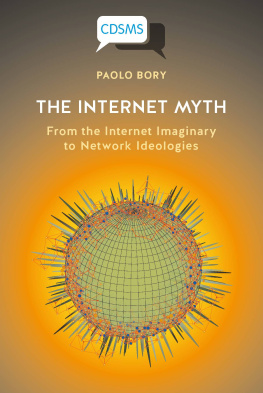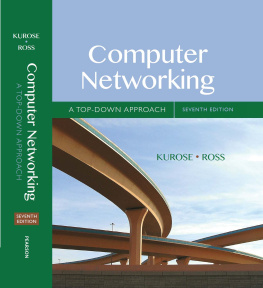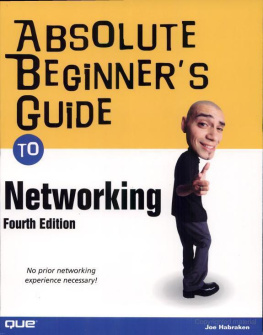Supplemental files and examples for this book can be found at http://examples.oreilly.com/9780596009342/. Please use a standard desktop web browser to access these files, as they may not be accessible from all ereader devices.
All code files or examples referenced in the book will be available online. For physical books that ship with an accompanying disc, whenever possible, weve posted all CD/DVD content. Note that while we provide as much of the media content as we are able via free download, we are sometimes limited by licensing restrictions. Please direct any questions or concerns to .
Foreword
IPv6 has evolved during the last dozen years or so, and the road has not been easy. The process has been driven primarily by the shortage of address space under IPv4, but also by the desire for new applications that don't fit within the older protocol's limitations. The address space crisis has been delayed by several new approaches to IP addressing, the most important of them being CIDR, NAT, and RFC1918 private address space. At the same time, it was clear that these solutions only postponed the inevitable, so efforts began to redesign the IP protocol. These efforts led to IPv6.
Although CIDR, NAT, and private address spaces have been successful, they didn't solve the problemthey only put it off. Today, the Regional Internet Registries have IPv4 address allocation policies that scare away those who would like to get public address space. IPv4 address space has become a scarce resource, and getting a public address block requires too much paperwork and bureaucracy. We can stretch out the IPv4 address space for 5, 10, or 50 years, but if the result is that only a privileged few can get public address space, what's the point?
Enter IPv6. IPv6 provides a clean fix to the fundamental problem: too few bits in the IP address. The increased length of IPv6 addresses means that they can be assigned freely and used comfortably; they're not a scarce resource that needs to be conserved. IPv6 also makes it possible to deploy new types of applications that rely on public address space, or that encode information in the IP address itself, such as multihoming and verifiably secure local networking.
The IPv6 specifications are now reasonably stable. Dozens of implementations have been deployed and used for years; if you want to use IPv6, you no longer need special software or patches. Most operating systems include IPv6 support, and some vendors even turn it on by default. IPv6 has arrived at a state where almost everyone can use it. The problem is now that they don't know how.
Therefore, the most important work at the moment is enabling IPv6 deployment, and creating an atmosphere where IPv6 applications can be created and flourish. That's where we'll really see the benefit of IPv6: in new applications that go beyond the client-server paradigm, and take advantage of IPv6's end-to-end addressing and connectivity features. That's where this book comes in: it gathers knowledge scattered across the Internet about deployment and applications. There are many ways to deploy IPv6, and the more complex the network you have, the more possibilities you have. This book helps you to understand those possibilities and deploy IPv6 on your network.
Have the Internet users, application developers, and vendors grown too comfortable with short-term patches to counter the problem caused by NATs and address space shortage, instead of choosing the longer-term solution, IPv6? We'll see.
IPv6 is ready for deployment. For you to deploy, use, and write applications for. This book shows you how; don't let inertia hold you back. Have fun doing that!
Pekka Savola
IETF IPv6 Operations (v6ops) working group co-chair
Preface
The chief thing is not to study, but to do.
Sayings of the Fathers, 1:17
IPv6 has been overhyped, undersold, rubbished, acclaimed, scuppered, and resurrectedoften several times a day by the same person in different conversations. It's been talked up and talked down, misunderstood, ignored and defended; but it is overcoming barriers and finding growing acceptance and support within the Internet community. For an obscure networking protocol of current interest to a small fraction of the population of our planet, this combination of passion and ignorance seems remarkable. You might ask, `So why all the fuss?' The motivation behind IPv6 is the need to fix the most difficult problems that the Internet faces today: address exhaustion, network management, scalability issues, and multi-homing. It is the promise of addressing[] these issues that has sparked the interest it has aroused, and that same promise is and will drive its adoption and eventual deployment. In fact, about the only thing that IPv6 hasn't been is widely deployed enough to justify this attention! We hope to do our small part to change that by providing this book to help you make your own judgement, ignoring the gain-sayers and the hype, and focusing on what IPv6 can do for you.
We of course know that technical merit or promise alone is not enough to make something successful, so besides an excellent design and good intentions, what else does IPv6 have going for it? Well, it's been adopted as a standard by organizations such as the 3GPP[] and well-known industry players such as Cisco, Microsoft, and Sun, it's seen an increasing amount of commercial deployment from organizations such as Microsoft and NTT, and confidence is increasing that the rightful successor to IPv4, the most popular internetworking protocol in the world, has arrived just when we need it the most.
No authors come without bias, this we accept, but in this book we hope to show you what is good, what is bad, and what is practical, acknowledging the faults and praising the innovations. Rather than presenting a protocol design manual or reference work (an endeavour tackled by many others previously) we will present a distillation of what IPv6 means in practice , directly relating it to the hands-on experience of network administrators. We take this approach both when describing IPv6 itself and when discussing how to use itthis means we don't hesitate to leave things out if they are of marginal utility, but do try to cover processes and procedures in detail.
You might be surprised to know that you get IPv6 functionality for free in a growing number of operating systems; pains have been taken by the designers of IPv6 to make it easy to experiment and work with, and some early adopters are now using it for their day-to-day business.
There are, of course, those who doubt that a serious transition will ever happen, who think that "the devil you know" is better than risking instability of their network. We confess a certain sympathy with that view. However, there are so many precedents for rapid changeand necessary changein this industry. We think it is foolish to ignore what is the only candidate for the future IP protocol of choice. After all, not many people were running a HTTP in 1993.[] Installed bases are relative things, especially in an industry that can change radically in a year.
Finally, a word on the ultimate success of the IPv6 process. There's no question that of the time of writing, it is mainly the adventurous who are deploying commercial production services over this protocol. Is there room for a sober, conservative approach? Predicting the future of technology is always a risky business. However, it is our contention that the slow growth of frustration with IPv4, the unavoidable issue of address exhaustion, together with the benefits of IPv6 outlined above will eventually cause a critical mass of deployment to accumulate. One point to keep in mind is that the projected IPv4 addressing requirements of China are larger than the total amount of free address space









